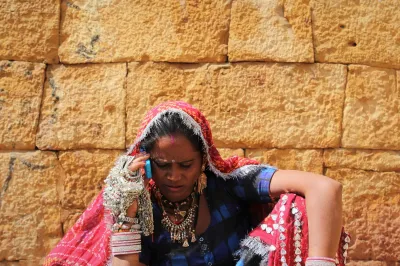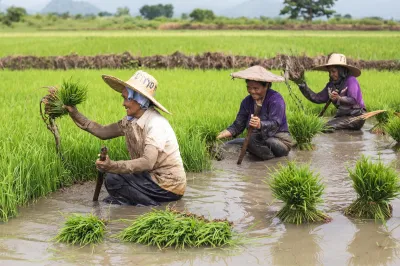Mobile Banking Ekosystem in India
Mobile banking is just one of the reasons India is a place to watch for innovations in financial inclusion. This short film profiles one such innovation, Eko, to see how businesses chasing the fortune at the base of the pyramid are serving the needs of poor customers in India.
Five years’ ago, Abhishek and Abhinav Sinha created a software program that allows migrant workers in cities across India to send money to their families using a cellphone. Now their company, Eko Financial Services Ltd., is working with two major banks, the State Bank of India and ICICI, India’s second largest bank, to offer financial services to poor and low income customers using local corner stores, pharmacies, and airtime resellers as agents. By harnessing the huge potential of domestic remittances as an anchor product, Eko hopes to tap a huge potential market in India, where three quarters of the 1.25 billion people live on less than $2 a day.
The challenge to make Eko a success isn’t the technology—it’s the business model. When you see the long queues at the banks it’s clear that the demand exists to make a profitable business based on tiny margins if the right business model and regulatory environment can be created. “It’s a volume game,” says Eko marketing executive Purva Gupta. “But at the same time we need a particular ecosystem for the Eko business to sustain and to grow.”
Agent networks are the main issue that mobile operators and banks need to get right if they are to turn branchless banking into a sustainable business. The Reserve Bank of India recently removed restrictions on agent exclusivity, so customers can now transact at customer service points of one bank even if their accounts are held at another bank. Such interoperability should mean greater efficiency and lower costs across the system.
In February, the Government of India released a task force report on a unified payments infrastructure linked to the biometric Aadhaar number that proposes electronic payments for government-to-people payments as a means to cut costs for the government and bring added convenience to welfare recipients.
These two important moves by the government suggest that new momentum around branchless banking will shape the financial inclusion agenda in India. Domestic remittances and government payments are driving the electronic money market. If these payments can be translated into banking that goes beyond basic bank accounts—offering savings, insurance, and loans—they will make a major impact on financial inclusion in India.




Comments
The article accurately states
The article accurately states that getting the business model right is the main hurdle. We, at Grameen Foundation, recognized that early and in 2011, we launched a 3- way partnership to test and scale a mobile-enabled business correspondent model. In this model, Cashpor acts as the ‘business correspondent’ – this work leverages on Cashpor’s infrastructure and rich experience of providing financial services. The other partners are ICICI Bank and Eko Technologies. The key ingredient that makes it all work is that Cashpor focuses on clients below $2 day and we believe strongly that pent up demand in this segment when matched with appropriately designed products and delivery systems can lead to large volumes that are required for sustainable and scalable growth. We are seeing some early successes with this model with Cashpor adding 200-250 savers/day and will share more information and analysis over the next few months.
It is interesting to note
It is interesting to note that the article states that by harnessing a huge domestic remittance market, financial inclusion agenda in India is going to be shaped. While it is certainly true that mobile banking will help the migrants to shift from informal channels (hawala, in particular) to formal channels of money transfer, what needs to be also understood is that also, “does a mere shifting of a channel becomes financially inclusive for such underbanked and unbanked population, a high percentage of them do not hold a formal bank account?”. Let me clarify. As I understand the Tatkal scheme of Eko, it is not essential that a sender holds a EKO-SBI mini saving account or any bank account number at all, all that he/she requires is to give a SBI bank account number, where the money is going to be transmitted. In many cases, a sender using tatkal service could give a bank account number of a relative/friend, and the money transferred to this account reaches the intended receiver. While one party has a bank account, the sender still may not hold a bank account, as is the case in a high percent of migrants’cases’; then, does it tantamount to thinking that all the senders who remit through mobile banking tatkal channel are financially included without owning a savings account; savings account is a first step towards financial inclusive initiatives and to my mind, the article leaves a gap.
Add new comment